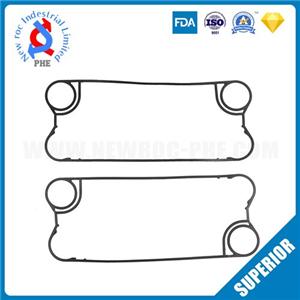Four tricks can improve the efficiency of the plate heat exchanger
1. Improve the surface heat transfer coefficient of heat exchanger plates
Because the corrugation can cause the fluid to produce turbulence at a small flow rate (Reynolds number-150), a higher surface heat transfer coefficient can be obtained. The surface heat transfer coefficient is related to the geometric structure of the plate corrugation and the flow state of the medium. The waveforms of the heat exchanger plates include herringbone, straight, spherical, etc.
2. Reduce the thermal resistance of the dirt layer
The key to reducing the thermal resistance of the fouling layer of the plate heat exchanger is to prevent fouling of the heat exchanger plates. When the thickness of the heat exchanger plate fouling is 1 mm, the heat transfer coefficient is reduced by about 10%. Therefore, care must be taken to monitor the water quality on both sides of the heat exchanger to prevent fouling of the plates and prevent debris in the water from adhering to the plates of the heat exchanger.
3. Use heat exchanger plates with high thermal conductivity
The plate material of the heat exchanger can be selected from austenitic stainless steel, titanium alloy, copper alloy, etc. Stainless steel has good thermal conductivity, with a thermal conductivity of about 14.4 W/(m·K), high strength, good stamping performance, and is not easy to be oxidized. The price is lower than that of titanium alloy and copper alloy. It is used more in heating engineering, but it is resistant to chlorine. The ability of ion corrosion is poor.
4. Reduce the thickness of heat exchanger plates
The design thickness of the heat exchanger plate has nothing to do with its corrosion resistance, but is related to the pressure bearing capacity of the heat exchanger. Thickened heat exchanger plates can improve the pressure bearing capacity of the heat exchanger. When the herringbone plate combination is adopted, the adjacent plates are inverted, and the corrugations are in contact with each other, forming a fulcrum with high density and uniform distribution. The corners of the plates and the edge sealing structure have been gradually improved, so that the plate heat exchanger has a good performance. The pressure capacity.




